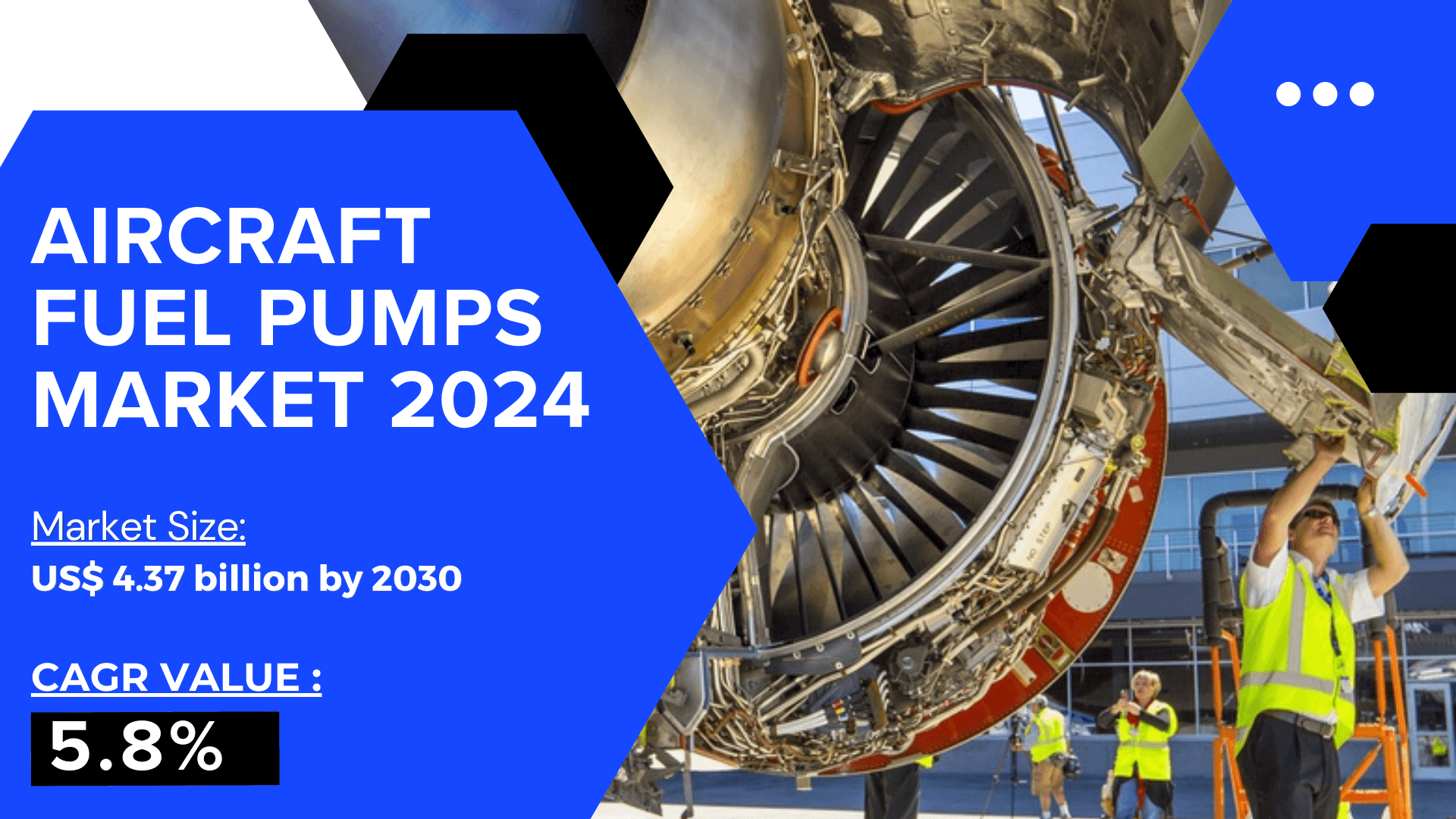TOP CATEGORY: Chemicals & Materials | Life Sciences | Banking & Finance | ICT Media

Download Report PDF Instantly
Report overview
Aircraft Fuel Pumps are essential components of an aircraft's fuel system, responsible for delivering fuel from the tanks to the engines at the correct pressure and flow rate. These pumps play a critical role in ensuring efficient engine performance under various operating conditions. Aircraft fuel pumps are designed to handle different fuel flow requirements based on aircraft type, operating altitude, and power needs. They are primarily categorized into three types: dynamically responsive fuel pumps, fuel transfer pumps, and fuel booster pumps, each serving specific functions within the fuel delivery system.
The global Aircraft Fuel Pumps market was valued at US$ 3.12 billion in 2024 and is projected to reach US$ 4.37 billion by 2030, growing at a CAGR of 5.8% during the forecast period from 2024 to 2030.
The United States Aircraft Fuel Pumps market was valued at US$ 956.3 million in 2024 and is expected to reach US$ 1.31 billion by 2030, exhibiting a CAGR of 5.4% during the same period.
In 2023, total unit sales reached 185,000, with commercial aviation accounting for 60% of demand. The military aircraft segment is witnessing a growth rate of 6.5% annually due to increased defense budgets and the modernization of military fleets. Moreover, electric fuel pumps have seen a 15% surge in demand in 2023, driven by the push toward more electric aircraft systems.

Drivers
Increasing Aircraft Production: The rising demand for air travel has led to a surge in aircraft production, thereby boosting the need for advanced fuel pump systems.
Fuel Efficiency and Technological Advancements: Manufacturers are investing in lightweight, high-efficiency pumps with improved performance.
Growth in Military Aviation: The expansion of defense budgets worldwide is driving demand for high-performance fuel pumps for military aircraft.
Electrification Trend in Aviation: Growing adoption of electric fuel pumps is expected to further fuel market growth.
Restraints
High Manufacturing Costs: The development of technologically advanced fuel pumps requires substantial R&D investment, increasing overall costs.
Stringent Regulatory Requirements: Compliance with aviation safety and environmental regulations can pose challenges to market entry and expansion.
Supply Chain Disruptions: Fluctuations in raw material supply and semiconductor shortages impact fuel pump production.
Opportunities
Advancements in Composite Materials: Increased R&D investments (30% growth) in composite materials and advanced pump designs are creating opportunities for innovation.
Expansion in Emerging Markets: Growing aviation activities in Asia-Pacific and the Middle East provide lucrative market opportunities.
Sustainable Aviation Initiatives: The shift toward green aviation technologies supports the development of energy-efficient fuel pumps.
Challenges
Integration with Next-Generation Aircraft: Compatibility with evolving aviation technologies remains a challenge for fuel pump manufacturers.
Market Competition and Price Sensitivity: The presence of multiple players intensifies price competition and affects profit margins.
North America (40% Market Share)
The largest regional market, driven by the presence of major aircraft manufacturers such as Boeing.
Increasing investment in military aviation programs supports market growth.
Europe
Strong presence of leading aircraft manufacturers like Airbus contributes to demand.
Focus on fuel-efficient aircraft systems is driving innovation.
Asia-Pacific (Fastest-Growing, 7.2% CAGR)
Rapid expansion of aviation activities in China, India, and Southeast Asia.
Increasing investments in indigenous aircraft manufacturing.
South America and the Middle East & Africa
Moderate market growth, driven by increasing air travel demand and military modernization programs.
Leading players in the Aircraft Fuel Pumps market include:
What is the current market size of the Aircraft Fuel Pumps market?
The global Aircraft Fuel Pumps market was valued at US$ 3.12 billion in 2024 and is expected to reach US$ 4.37 billion by 2030 at a CAGR of 5.8%.
Which are the key companies operating in the Aircraft Fuel Pumps market?
Some major players include Honeywell International, Parker Hannifin, Eaton, Crane Aerospace, Triumph Group, and Zodiac Aerospace.
What are the key growth drivers in the Aircraft Fuel Pumps market?
Key drivers include increasing aircraft production, fuel efficiency improvements, military aviation expansion, and the growing adoption of electric fuel pumps.
Which regions dominate the Aircraft Fuel Pumps market?
North America holds the largest market share (40%), while Asia-Pacific is the fastest-growing region (7.2% CAGR).
What are the emerging trends in the Aircraft Fuel Pumps market?
Trends include increased R&D investment in composite materials, electrification of aircraft fuel systems, and growth in military aviation applications.
Key Benefits of This Market Research: